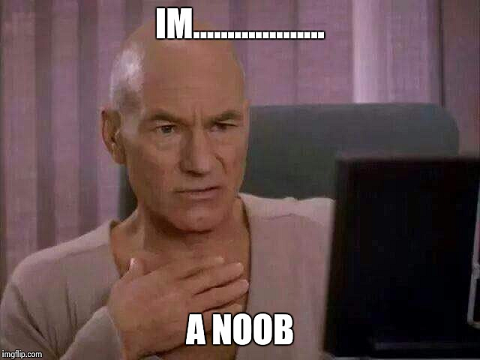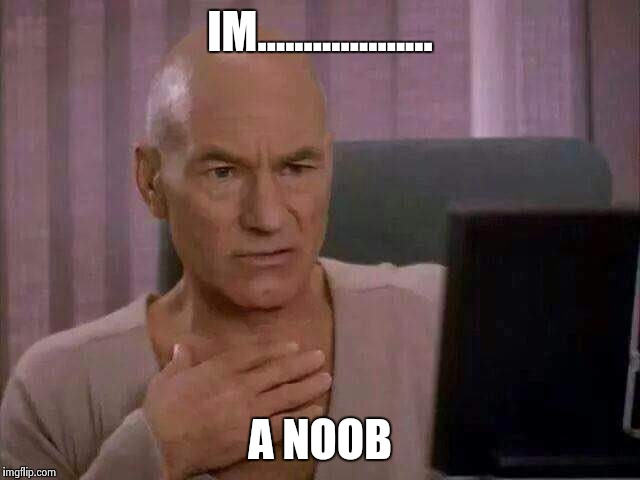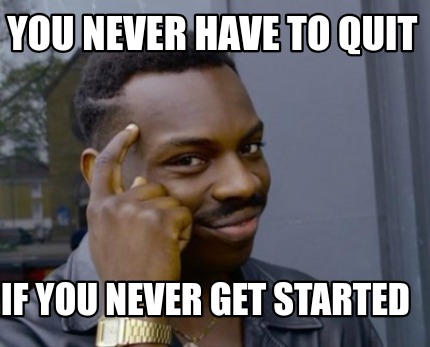
- by Dr. Mike
I started CoachLancer.com in May 2019 with the mission of solving freelancing problems and improving the chances of starting freelancers when building their businesses online. I’ve talked with hundreds of fellow freelancers in various domains, not just my own. I’ve done video call sessions to sort out particular problems, I’ve done collaborative proposal-writing, I’ve created compelling online profiles, I’ve helped in setting the price right, I’ve helped people to find their niche. And a couple of times a starting freelancer just needed some encouragement to get started for real. 😉
Once, I got someone his first online freelance gig in just 5 calendar days starting from absolute zero! While it took months for me to get my first gig in 2015, I was surprised myself how easy it is when you know the right approach from the beginning.
It’s been very interesting to hear about and understand the problems of others, many of them are issues that I never encountered, and provide solutions to them.
In this short article, I outline the most common questions I’ve got and typical answers to them. Some of the answers are obvious, some took time and collaboration to develop. That’s been the most fun part!
Problem 1: “I’m a fresh graduate with no experience, how can I start freelancing?”
It is possible to start your own freelance business without having prior experience with anything. The only real issues arise from:
- Credibility: The clients doubt you can do the job in the first place no matter how many people you ask.
- Sales: It turns out hard to find paying customers who commit to working with you.
- Operation: The first paid projects go horribly wrong because of the lack of an efficient personal work process that comes with experience.
The first two are solvable by intelligence and hard work. The last one requires experience which is possible to gain “on the fly” by working insane hours for a small amount of money. It is possible.
The most common value proposition of a fresher is this: “I do it cheaper because I really need this project!” That might work but probably doesn’t bring much well-paid work from the same client. Why? Because they know you as the cheapest guy!
A better way is to offer more for the normal price. Take more work that you know how to do off the client’s table onto yours and build a deep business relationship. Put in the hours to make your client happy. Improve their business operation in any way you can.
This approach is quite possible in many domains that depend more on personality and natural talent than work experience and education. Doing social media marketing could be one such business.
But it is important to understand that this approach does not work in technical fields! You can’t do engineering unless you’re a real engineer. You cannot become a top freelance software developer before you have seen through several big projects with success.
And by “experience” I mean the real thing: Have you done something that another person is willing to pay for? I’ve worked with a good young programmer who just finished his Bachelor’s degree. Yet, he has been programming since age 13 and has been doing part-time software development in his parents’ business. So, by the time of graduation, without ever having a full-time job, he had considerable expertise in a couple of programming languages and stacks comparable to several years of full-time work.
Experience is subjective. You know what you know. The best of us are even conscious of what we don’t know. 😉 To get a freelance gig, however, you must be able to demonstrate what you know, which can be tough especially if you work in a strictly technical field and are used to a setup where someone else does the talking. People buy services based on the impression of the business since the real delivery is not yet known to them at the moment of making the deal.

Being a noob can be an asset. But proceed with great care.
Nonetheless, it is possible to start freelancing without having much work experience. More tips getting started here: 9 Freelancing Hacks for Starting Freelancers.
Problem 2: “I joined a freelance site, how can I get my first project?”
This one is really simple. All sites have some sort of reputation system, which means those who have completed projects with good reviews are seen as more credible than those with $0 earnings and no reviews. It’s natural and there is nothing wrong with it. The reputation system works really well. Then, how to breach the $0 earning status?
On any of those sites, all you really need for building credibility online is the first couple of projects with some genuine earnings. After the first couple of projects, the rest comes much easier. So, you just need your icebreaker projects somehow.
Most try this:
- Set up the profile (typically with a bad photo).
- Add 1-2 portfolio items of earlier projects (done outside the platform, of course).
- Start sending loads of proposals/quotations to all jobs loosely related to own competence.
This works only if you have picked a nice little niche where you face little competition in the beginning. Then you can stand out with a great profile and perfect proposals.
This does not work if your profile is essentially the same as everyone else’s, you do not have anything special to offer, you have the same price level as everyone else (or lower), etc. You must have a way to stand out! Usually, it takes really long before you get to talk to someone about what you can offer. It can take months! And the way the freelance sites work, you do not get any feedback other than silence.
The fastest way to get started with freelancing online is probably this:
- Find a real client by any means you have (best if from a foreign country).
- Plan the project, make the deal great for the client, and put a price tag on it.
- Bring the project to your freelance site and give a small discount on the above price (and be sure to count in all client-side fees) to make the client’s additional effort worthwhile.
When I suggested this to someone, he asked “Yes but don’t you think this would reduce my profits from the project?” Of course it does! And that is the thing. This kind of thinking is very short-sighted and not very business-oriented although it might seem like it. If thinking properly and long-term, you would never ask that question.
A good profile like mine sells itself. People do not ask “Can you do it?” They ask “Are you free and interested?” which has a totally different set of expectations tied to the question.
The best freelance sites do a lot for you automatically purely because of the reputation that you have gained. Also, none of the sites shows the profiles of freelancers with $0 earnings on the first page of search results. It’s like search engine optimization (SEO) done with Google. Your profile must rank high.
Therefore, you must think of the initial steps on a freelance site as an investment. Pay the premium plan or bring your clients in for less profit, but in any case, make sure you do not sit at $0 earnings too long. The longer, the less chance of success. Some sites even kick you out if you are not earning anything (for the platform). 😉 And some sites have specific programs for bringing your offline clients online onto the platform.

Start with a maximal thrust or do not start at all. Trying a little bit does not get you anywhere.
More tips on starting on a freelance site are available here: 10 Freelancing Hacks You Should Know Before Joining a Freelance Site.
Problem 3: “I’m sending so many proposals, but I never get any reply. Why?”
This is a very common issue on any freelance site and it always comes down to three things:
- The profile does not look credible.
- The proposal has a vague or missing value proposition.
- The niche is unclear which means all efforts are mistargeted.
And if we reverse the above, to get replies to your proposals you need to have a credible profile, great value proposition and you should only focus on one particular niche in the beginning. The more precise niche, the less competition, and the better chance of attracting real clients.
What you should do is:
- Search for suitable projects that are matching exactly with your profile. Think twice about whom to target.
- Craft the proposal/quotation with a clear value proposition in terms of the numbers and your value-added services, and match it with the length of the client’s job post.
- Discuss with the client without wasting any time with too detailed questions. Be on the client’s side from the beginning and be sure to pay attention to the indirect messages and the tone of the discussion.

Reading the client right is the key. See the hints in the job description, client profile, and messages.
Take a look at my proposal writing guide for more tips: Have You Proposed Right?
Problem 4: “How do I know who my dream client is?”
If you do not know who your customers are, there is little point in starting your own business, freelance or otherwise. It is a very easy process when you have an understanding of your industry.
In the past year, I have been shocked by the fact that so many starting freelancers have not got through the process of defining their client base. All they have been thinking is what they do and how they might be doing it, but not whom they do it for! When I ask “Who is your ideal client?” people go to the “Errrr…???” mode and all I get is a short silence as an answer. (The most honest people say “I have no idea, what do you mean?” which is hardly any better.)
The rule of thumb is to do what you do best for those who need it most. Need drives business. To clarify it to yourself, you can do this thought exercise:
- Write down the problem that some people have and the solution you offer in a very efficient way. This is your core offering.
- Imagine all other people in the world who can deliver a less efficient solution to the problem. These are not dangerous competitors as long as you can make a clear distinction between you and them.
- Imagine those people who can offer an equally efficient solution to the problem. These are your actual competitors.
- Imagine a dream client who needs the solution more than most. Typically, these are people whose business you can enable and not people who would only gain a slightly more convenient way to execute it. This is the game you want to be playing.
- Research where those dream clients go to find the solutions they need. Go where they go and meet them. (This is the trivial part here.)
This is not rocket science, it is something much easier – it is business. 😉 The best part of all is that you define your own business exactly as you want! Just choose. Literally, your own understanding and imagination are the only limits here.

You cannot go forward with a vague plan… but it is OK to learn and improve the plan as you go along.
Read about how I built my freelance offering here: What is CTO-as-a-Service and How I Do It as a Freelancer.
Problem 5: “There is always someone cheaper getting the gig, so how can I win?”
This is one of the most interesting and complex problems to sort out. It comes down to your niche and competitive strategy. (If you do not have either of those, you should probably restart your business as you must have started on the wrong track from the beginning.)
If the only thing you are trying to offer is a cheaper service than your competition, you are in the race to the bottom. It is muddy down there. Skip that.
The value proposition is the core of your business. What do you sell to whom and what is it worth to them? It comes down to who you define to be your ideal clients. For a freelancer, it is important to be able to do one thing really well rather than do a lot of things on a just about acceptable level. Having valuable expertise pays well as opposed to being one of the masses who can easily be replaced by a cheaper guy. And there is always a cheaper guy!
When facing tough competition, there are several tricks that you can try:
- Redefine your offering, which sometimes could be just a small shift toward a more specific service than before.
- Pivot your niche altogether. Risky if done in a moment, great move when done over a longer period, e.g. 6 months of transition time.
- Move to another marketplace. This, however, might mean you have to start from close to zero again in terms of earnings and stats.
- Build a new sales channel. Some freelancers I know have started blogging, making video tutorials on YouTube, posting about the work on social media, and taking measures that increase their online presence. (See great examples here!)

Don’t go down to the bottom with your competition. Find your way back to the surface like Jaws, if you have to! Theme music is not mandatory, though. 🙂
More on this topic and Game Theory here: Freelancing – It’s an Expert’s Game.
Freelancing problems solved?
Is this all? No. Definitely not. You should probably take a look at the “blueprint” of my Upwork success story to see if you can replicate some of it. Read: How to Start Freelancing and Make It to the Global Top – My First Year on Upwork.
Dr. Mike
Mikko J. Rissanen, Ph.D., a.k.a. Dr. Mike, is an accomplished solopreneur living in a tropical paradise, inventing cool tech and coding from his beach office... and eating coconuts all day, every day. He has been running his one-man show in Penang, Malaysia, since 2014 until he moved the business to the United States as I2 Network in 2021. He is one of the most highly paid freelancers on Upwork and he has been supporting hundreds of starting freelancers since 2017. Follow his latest tips on LinkedIn or seek his personal guidance as a CoachLancer member!